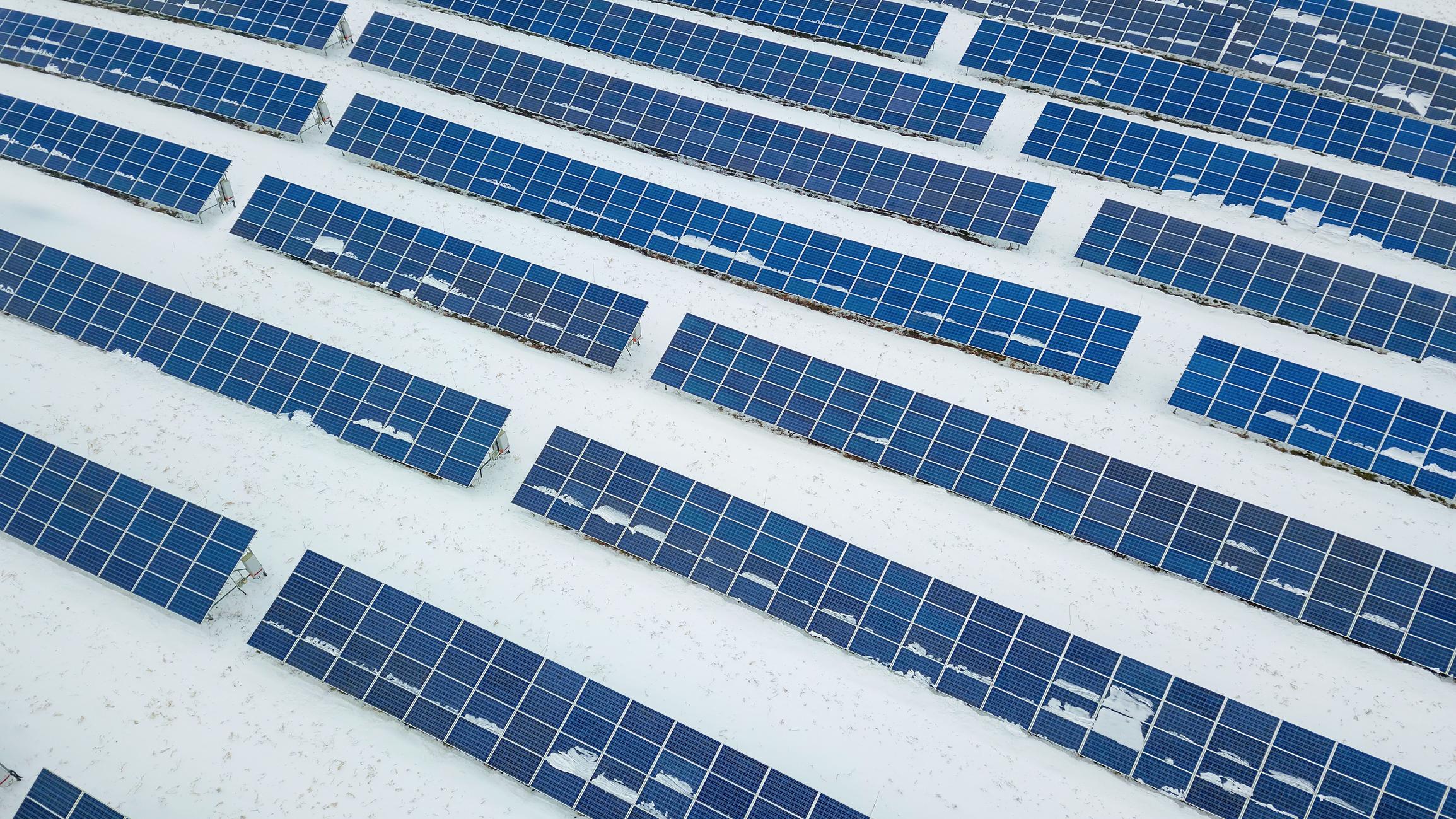Neither snow nor...smoke, will stop solar panels from delivering energy

By Margret Nellissery, BRC-Canada Analyst
March 27, 2024
Mother Nature throws a lot at the solar panels we park outside in the elements — rain, sleet, snow and, increasingly, even smoke.
As solar power plays an ever growing role in our energy production, it’s not surprising people are becoming curious about how the panels handle this elemental pummeling. In Canada, we’re particularly preoccupied with the weighty matter of snowfall, having to shift substantial amounts of that ourselves off flat surfaces (AKA shoveling snow).
Solar panels essentially shrug off that issue, though. The sleek silicone surface of solar panels, coupled with the steep angle at which the panels are oriented, most often enables snow to slide off on its own1,2. Even when covered in a couple of inches of snow, the dark reflective surface of the panels absorbs sunlight and generates heat while converting the sunlight to electricity which melts the snow easily, further enabling the clearing of the snow from the rest of the panel. This self-cleaning aspect is similar to what happens when you place a warm hand on a frosty window, it gradually melts the frost, starting from the point of contact and spreading outward. Similarly, the panel absorbs the sunlight, which initiates the melting process, which then spreads throughout the entire panel, gradually clearing it of snow. These factors make solar panels resilient during the winter months3.
When looking at generation loss during the winter, there are many factors to consider because power generation might not only be reduced in the winter due to snow coverage, but also due to shorter daylight hours, cloudier days, etc. Despite the self-cleaning characteristic of solar panels, the common assumption is that there is a 20 to 30 per cent decrease in annual solar energy production due to snow.
A five-year study was done by the Northern Alberta Institute of Technology (NAIT) in Edmonton to understand the impact of snow and roof angle on the performance of a solar array installed on a building at the institute's campus. The study compared two arrays of panels arranged at various angles, with snow regularly cleared off of one set of panels while the second set was left untouched. The presence of snow cover caused a less than five per cent loss in electricity production annually, with the panels with a higher tilt having lower energy losses because of the ease at which the snow could slide. This is significantly lower than the previously assumed 20 per cent loss. The study concluded that having a larger portion of the production occurring during the longer days in the summer, the loss of production from snow had minimal impact on electricity production on an annual basis4.
Innovative renewable energy developers are now also harnessing the use of double-sided panels. These panels take advantage of sunlight reflecting off snow on the ground. They are more effective than one-sided panels in preventing generation losses due to snow coverage. One-sided systems were observed in a Michigan study to experience an average snow-related loss of 33 per cent in the winter months (November to March), while bifacial systems demonstrate only a 16 per cent in winter snow losses5.
While we seem to have dealt with snowfall, wildfires are becoming increasingly prevalent in Canada and pose significant challenges to various aspects of life and infrastructure. Beyond direct damage to communities and ecosystems, wildfires generate extensive smoke that contains fine particulate matter and aerosols that compromise air quality and visibility. One of the many broader ramifications of wildfires beyond immediate destruction is its potential hindrance to the performance of solar photovoltaic systems6.
Even though solar facilities may not be located close to wildfire zones, the smoke from the fires travels, affecting larger geographic regions. A study done in Australia to understand its impact showed that smoke reduced solar generation by seven per cent during the study period, with a peak reduction of 27 per cent during the same period7. Similarly, another study conducted in the Western U.S. showed that the solar generation declined by eight per cent on average during days when smoke was present compared to days without smoke8. With the drastic warming of the climate, wildfires are expected to triple by 2050, resulting in increased particulate matter and aerosol concentrations in the atmosphere9.
What does all this mean for renewable energy? Winters will continue to bring snowy weather and summers could increasingly bring smoky seasons. Renewable energy developers and grid operators need to be ready for all of it. Luckily, solid science is already helping us pin down the precise impacts and reassuring us that much of it remains relatively small.
